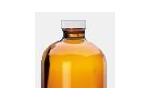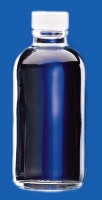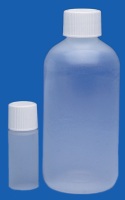- ▶
- Heaters/Source
- ▶
- Agilent Heaters and SensorsMass Spectrometry, Scientific Supplies & ManufacturingScientific Instrument Services 5973 Source Heater Tamper Resistant Allen Wrench 5973/5975 Quad Sensor 5985 Source Heater Assembly Agilent Interface Heater Assembly 5971 Interface Heater

- ▶
- Reference Material on InstrumentationArticle - A High Temperature Direct Probe for a Mass Spectrometer Design of a Direct Exposure Probe and Controller for use ona Hewlett-Packard 5989 Mass Spectrometer SIS AP1000 AutoProbe™ SIS AP2000 AutoProbe™ - Description of System HPP7: Direct Probe Electronics Console HPP7: Direct Probe for the Agilent (HP) 5973/5975 MSD HPP7: HP Direct Probe Application Notes HPP7: Installation Directions for the Direct Probe HPP7: Side Cover for the HP 5973 MSD HPP7: Support HPP7: Probe Inlet System for the Agilent (HP) 5973 and 5975 MSD with Automatic Indexed Stops HPP7: Theory of Operation of the Direct Probe and Probe Inlet System Direct Thermal Extraction Thermal Desorption Application Notes Environmental Thermal Desorption Application Notes Food Science Thermal Desorption Application Notes Forensic Thermal Desorption Application Notes GC Cryo-Trap Application Notes Headspace Application Notes Purge & Trap Thermal Desorption Application Notes Theory of Operation of the AutoDesorb® System AutoDesorb Notes for SIS Dealers Adsorbent Resin Application Notes Installation of the Short Path Thermal Desorption System on Agilent (HP) and Other GCs Installation of the Short Path Thermal Desorption System on a Varian 3400 GC AutoDesorb® System Development Team Thermal Desorption Applications and Reference Materials Installation of the Short Path Thermal Desorption System - TD5 Part I - Design & Operation of the Short Path ThermalDesorption System Installation Instructions for the Model 951 GC Cryo-Trap on the HP 5890 Series GC Installation Instructions for the Model 961 GC Cryo-Trap on the HP 5890 Series GC Operation of the Model 951/961 GC Cryo-Trap SIS GC Cryo Traps - Theory of Operation NIST/EPA/NIH Mass Spectral Enhancements - 1998 version (NIST98) SIMION 3D Ion Optics Class Mass Spectrometer Source Cleaning Methods MS Tip: Mass Spectrometer Source Cleaning Procedures Mass Spec Source Cleaning Procedures Micro-Mesh® Abrasive Sheets Research Papers Using New Era Syringe Pump Systems EI Positive Ion Spectra for Perfluorokerosene (PFK) Cap Liner Information How do I convert between fluid oz and milliliters? Which bottle material should I choose? Which bottle mouth should I choose? The Bottle Selection Guide CGA Connections for Gas Tanks Chemical Reaction Interface Mass Spectrometry (CRIMS)

- Lab/CleanMicro-Mesh® (Fine Cushioned Abrasive) Aluminum Oxide Cleaning Abrasive Fiberglass Cleaning Brushes Swabs and Applicators Nylon and Latex Gloves Cleaning Wipes SIS MS Source Cleaning Kits Dust-Off® Hurricane Canless Air System Wheaton Bottles Wheaton Vials Wheaton Closures Sterile Vials - Bottle, Stopper, and Cap - All Together Certified Sterile Kimble Chase Clear Serum Vials Soil Sampling Kits Crimpers and Decappers Temperature Measurement & Recording Devices Bullet Blender® Homogenizer The SW 110 Multi-Purpose Spot Welder New Era Syringe Pump Systems Ohaus MB Series Moisture Analyzers Celestron® Handheld Digital Microscope (HDM) Checkit® Pipette Accuracy Test Greenwood Lab Supplies Next Advance Lab Products Catalog Page G1

- LiteratureApplication Notes Adsorbent Resins Guide Mass Spec Tips SDS Sheets FAQ MS Calibration Compound Spectra Manuals MS Links/Labs/ Organizations MS Online Tools Flyers on Products/Services Scientific Supplies Catalog About Us NextAdvance Bullet Blender® Homogenizer Protocols Micro-Mesh® Literature Instrumentation Literature Agilent GC/MS Literature SIS News / E-Mail Newsletter NIST MS Database - Update Notifications

- ▶
- The Bottle Selection Guide
- ▶
- Which bottle material should I choose? (This Page)
- Glass
- Plastic
Materials - Glass
Color
|
Clear: Clear glass allows the contents to be viewed. This is particularly useful when contents are being evaluated for change over extended periods of time. |
|
Glass Type
"180" Glass This glass is an exceptionally clear borosilicate glass of high chemical durability, which has been especially formulated for the lowest background count while still at a reasonable cost. Great care has been taken to select only those ingredients for the batch that would not cause unwanted background count or color. Potassium as a separate element has been excluded from the batch to minimize K40. Special controls assure high quality and batch to batch uniformity. This glass is only available as a tubing vial.
"200" Glass, also referred to as "Wheaton 33" low extractable borosilicate glass, is a clear borosilicate glass with exceptional thermal endurance that meets the requirements for both USP and ASTM Type I, Class A, borosilicate glass. Most of our laboratory products are made from Wheaton 33. This glass meets all sterilization requirements.
"300" Glass is a chemically resistant clear borosilicate glass that meets all of the requirements for Type I glass as specified in the current revision of the U.S. Pharmacopeia.
"320" Glass is a similar composition to "300" except amber color for light sensitive applications. Meets UV light protection limits as specified in the current revision of the U.S. Pharmacopeia.
![]() "400" Glass is a clear borosilicate glass that falls well within the
limits for Type I chemically resistance borosilicate glass, as
specified in the current revision of the U.S. Pharmacopeia.
"400" Glass is a clear borosilicate glass that falls well within the
limits for Type I chemically resistance borosilicate glass, as
specified in the current revision of the U.S. Pharmacopeia.
"500" Glass is similar to the "400" formulation except amber color for light sensitive applications. Meets UV light protection limits as specified in the current revision of the U.S. Pharmacopeia.
 "800" Glass is a superior soda-lime clear glass that meets
requirements for Type III soda lime glass as specified in the current
Revision of the U.S. Pharmacopeia.
"800" Glass is a superior soda-lime clear glass that meets
requirements for Type III soda lime glass as specified in the current
Revision of the U.S. Pharmacopeia.
![]() "900" Glass is similar in formulation to "800" except amber color for
light sensitive applications. Meets UV light protection limits as
specified in the current revision of the U.S. Pharmacopeia.
"900" Glass is similar in formulation to "800" except amber color for
light sensitive applications. Meets UV light protection limits as
specified in the current revision of the U.S. Pharmacopeia.
Materials - Plastic
Polyolefins The class of polyolefins are non-toxic, non-contaminating, flexible to rigid and shatter resistant. They resist mild chemical exposure short term and are good moisture barriers and poor gas barriers.
-
 Low Density Polyethylene (LDPE). Very flexible, natural
milky color, translucent with high impact strength. Excellent for mild
and strong buffers, good chemical resistance. Good water vapor and
alcohol barrier properties. Poor gas barrier, Sterilizable with EtO or
gamma radiation. Good stress crack and impact resistance. SPI
recycling rating number (4).
Low Density Polyethylene (LDPE). Very flexible, natural
milky color, translucent with high impact strength. Excellent for mild
and strong buffers, good chemical resistance. Good water vapor and
alcohol barrier properties. Poor gas barrier, Sterilizable with EtO or
gamma radiation. Good stress crack and impact resistance. SPI
recycling rating number (4). -
 High Density Polyethylene (HDPE). Flexible but more rigid than
LDPE. Natural color is milky white, semi-translucent depending on
density. Good impact strength and stress crack resistance. Good
chemical resistance. Good vapor barrier but poor gas
barrier. Sterilizable via EtO or gamma radiation. SPI recycling rating
number - (2).
High Density Polyethylene (HDPE). Flexible but more rigid than
LDPE. Natural color is milky white, semi-translucent depending on
density. Good impact strength and stress crack resistance. Good
chemical resistance. Good vapor barrier but poor gas
barrier. Sterilizable via EtO or gamma radiation. SPI recycling rating
number - (2). - Polypropylene (PP). Rigid, solid, durable in container or cap forms. Opaque, natural grayish yellow in natural form. Excellent stress crack and impact resistance. Excellent moisture barrier, good oil and alcohol barrier, poor gas barrier properties. Good chemical resistance. Sterilizable with EtO or autoclaving. SPI recycling rating - (5).
- Polystyrene (PS). PS is a transparent, rigid and glasslike polymer. Good resistance to inorganic chemicals. Light and heat stable, biologically inert and non-toxic. Good impact and stress crack resistance, poor barrier properties. EtO or Gamma sterilizable. SPI recycling rating - (6).
- Polyvinyl Chloride (PVC). Flexible to rigid. Good for coatings; fair water and good oxygen barrier. Transparent to yellowish color in natural state. Good chemical resistance. Sterilizable by EtO. Good impact and some stress crack resistance. Poor recycling due to chloride residues. SPI recycling code number - (3).
- Polycarbonate (PC). Rigid and strong, Excellent clarity. Poor barrier properties. SPI recycling code number - (7).
-
 Polyethylene Terephthalate (PET). Semi-rigid to rigid
depending on wall thickness. Natural color - clear and
transparent. Good alcohol and solvent barrier; good gas and fair
moisture barrier. Good to fair chemical barrier; not good for strong
acids or bases. Good moldability. Sterilizable through EtO and gamma
radiation. Good stress crack and impact at room temperature and
above. SPI recycling rating - (1).
Polyethylene Terephthalate (PET). Semi-rigid to rigid
depending on wall thickness. Natural color - clear and
transparent. Good alcohol and solvent barrier; good gas and fair
moisture barrier. Good to fair chemical barrier; not good for strong
acids or bases. Good moldability. Sterilizable through EtO and gamma
radiation. Good stress crack and impact at room temperature and
above. SPI recycling rating - (1). - Polybutylene Terephthalate (PBT). Good chemical resistance, clear color, resistant to water, weak acids and bases at room temperature. Can be sterilized by EtO and autoclaving, at temperatures up to 180 °C. SPI recycling code number - (1).
Source: Wheaton Science Products.

